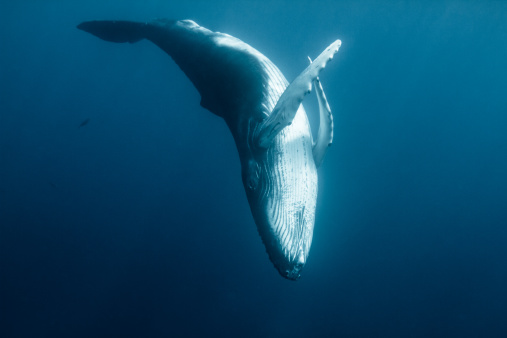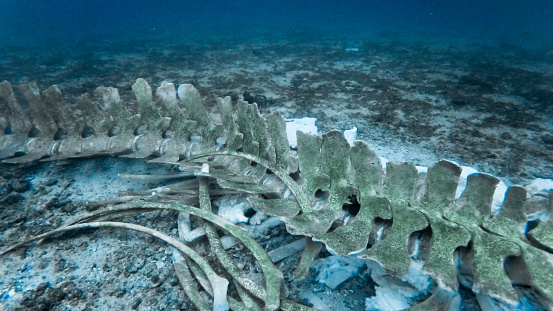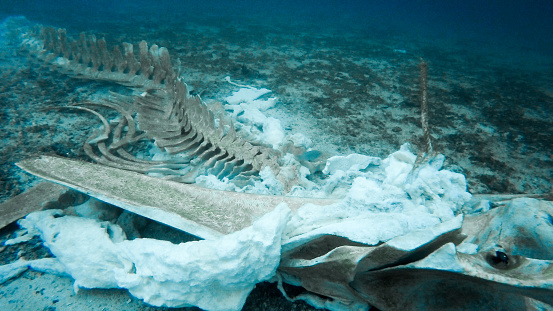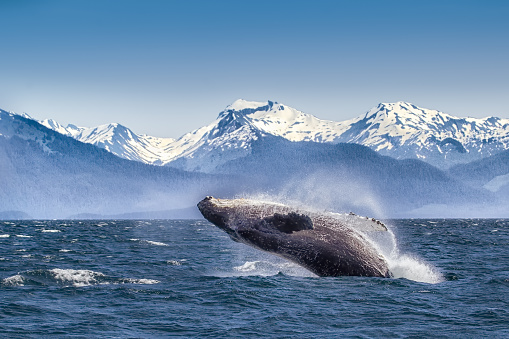Whales come from the deep sea and will eventually die in the deep sea. When a whale dies, it leaves the blue world with its last gift.
When whales die and sink, their carcasses – known as whale falls – provide a concentrated food source and a settlement for organisms in the deep sea, creating a deep-sea ecosystem that lasts for decades to hundreds of years.

Sinking to the bottom of the ocean only marks the beginning of a whale's afterlife.
At the beginning, scavengers such as ratfish, hagfish and sharks feed on the dead whale for up to two years, consuming up to 90 percent of the whale's body tissue. Next, it's the turn of the small deep-sea animals to feast. Crabs, clams and mussels feed on whale bones while parasitizing there.
Over the next few decades, large numbers of anaerobic bacteria enter the whale's bones to decompose the remaining tissue and release hydrogen sulfide which nourishes chemosynthetic autotrophs. Finally, the remains of the whale bones become a settlement for deep-sea creatures.

The first whale-fall ecosystem was discovered by a team of scientists led by University of Hawaii oceanographer Craig Smith in 1987. According to Chinese National Geography, researchers at the University of Hawaii have found at least 43 species of 12,490 organisms in the deep waters of the North Pacific that depend on whale fall for survival in 1998.
The whale fall is, so to speak, a vast oasis of life.

However, the number of whales in the ocean has plummeted, leading to fewer whale falls, due to climate change and human activities such as whaling, sonar interference and plastic pollution.
The reduction of whale falls directly leads to the disruption of food webs based on whale falls, which may indirectly lead to the collapse of marine ecosystems.
According to World Wide Fund for Nature, despite a moratorium on commercial whaling and a ban on international trade of whale products, three countries – Iceland, Japan and Norway – continue their commercial whale hunts with over 1,000 whales killed a year.
According to the International Union for Conservation of Nature Red List of Threatened Species, 49 out of 386 whale species are classified as endangered, and 17 critically endangered, two extinct in the wild and eight extinct.

About The Blue World series:
The ocean covers more than 70 percent of the Earth. In this blue world, there are all kinds of marine life with surprising abilities we don't know about. In this series, CGTN guides you through the journey of exploring the amazing animals in the ocean.
For more:
The Blue World: The mystery of the sex of green turtles
The Blue World: Brainless jellyfish
The Blue World: Half asleep, half awake dolphins
The Blue World: Never make a pufferfish angry
The Blue World: From round fish to flatfish
(All images via Getty Images)
(If you want to contribute and have specific expertise, please contact us at nature@cgtn.com.)

